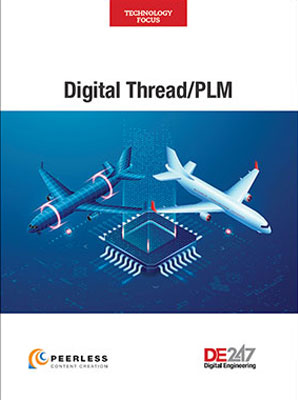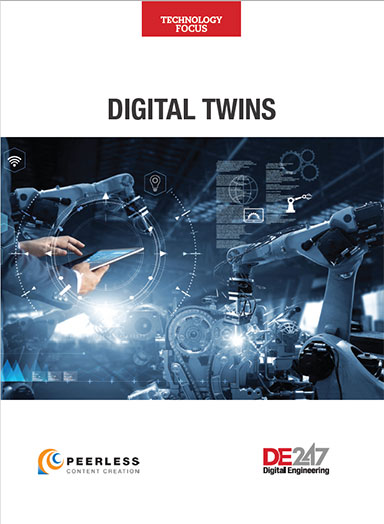
Altair’s solution has features that can be deployed through any and every stage of a product lifecycle. Image courtesy of Altair.
Latest News
October 11, 2022
Altair has launched its digital twin solution that features connected, cross-functional capabilities that can be deployed through any stage of a product lifecycle.
“Altair offers the market's premier digital twin solution that can transform the way people and organizations design, develop, implement and improve products and processes,” says Sam Mahalingam, chief technology officer, Altair. “Moving forward, we will continue establishing our digital twin leadership to provide further democratized, more accessible digital twin solutions.”
Altair's open, vendor-agnostic digital twin solution gives customers the flexibility to run Altair software anywhere—whether on-site, in the cloud, hybrid or via plug-and-play appliances—and ability to choose from a comprehensive toolset via a units-based licensing model called Altair Units.
Pre-Production
In the pre-production stage, Altair offers toolsets for “as-specified” twins, which cover system requirements, development, validation, real-world performance prediction and streamlined mechatronic product development. This allows teams to design, analyze, and optimize systems and performance without physical prototypes. It also enables teams to converge multiphysics simulation with advanced HPC, AI, and data analytics capabilities in a unified environment.
Featured as-specified twin tools include Altair Activate, Inspire, Drive, HyperWorks, PollEx, Flux, Compose, Feko, PSIM, and XLDyn (via the Altair Partner Alliance).
Post-Production
In the post-production stage, Altair has toolsets for “as-built” and “as-manufactured” twins. As-built twins allow teams to evaluate advanced virtual system dynamics under what-if scenarios, deploy reduced order modeling (ROM), detect design sensitivities and resolve test failures. As-manufactured twins allow teams to evaluate integrated software, processors and hardware involved with systems such as human driver controls, ergonomics, immersion and virtual reality. These twins help teams simulate realistic and unexpected events, improve workability and operation windows, and produce high-fidelity displays of innovations in interactive and realistic environments.
Featured as-built and as-manufactured twin tools include Altair Embed, MotionSolve, HyperStudy, Panopticon, Design Explorer, and Vortex Studio (via the Altair Partner Alliance).
In-Service Systems
Altair's digital twin tools for “as-sustained” twins cover predictive analytics and predictive maintenance of manufactured products that are in service. Teams can leverage real-time data stream analytics and machine learning to determine a system's remaining useful life (RUL), trigger insights based on anomaly detection, refine system performance and deliver optimized maintenance routines.
Featured tools for as-sustained twins include Altair RapidMiner, SmartWorks, SLC, Monarch and Knowledge Studio.
To learn more about Altair's digital twin solution and use cases, click here.
Sources: Press materials received from the company and additional information gleaned from the company’s website.
More Altair Coverage
Subscribe to our FREE magazine, FREE email newsletters or both!
Latest News
About the Author
DE’s editors contribute news and new product announcements to Digital Engineering.
Press releases may be sent to them via DE-Editors@digitaleng.news.
Related Topics






